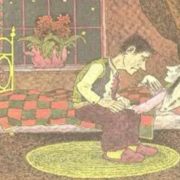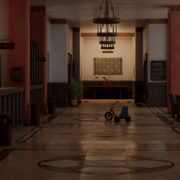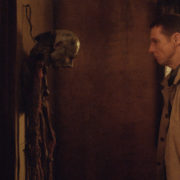Synopsis
The movie The Book of Stone (1969) is a Mexican supernatural horror film, written and directed by Carlos Enrique Taboada. The film is set in a bourgeois family that lives in an afforested property they have recently bought¹.
Julia, a newly appointed governess, finds herself in charge of a young girl named Sylvia. Despite her father Eugenio’s emotional distance and the recent addition of a stepmother, Mariana, Sylvia’s life is far from ordinary. She claims to have a playmate named Hugo, who Julia initially assumes to be a neighborhood boy. However, Eugenio reveals that Hugo is merely a stone statue in their garden, leading Julia to question Sylvia’s mental health.
Despite the initial cold reception, Sylvia gradually warms up to Julia, who treats her with kindness and understanding. One day, Sylvia leads Julia to an abandoned church, where a frightening encounter with a strangely marked lizard nearly causes Julia to fall from the roof. During this incident, Sylvia speaks to Hugo, expressing her reluctance to accompany him.
Back at the house, Sylvia’s godfather Carlos visits, bringing along his new dog, Yago. However, a frightening incident involving Yago leads to tension in the household. The following day, Julia discovers her necklace, which she had lost in the lake, in her room. This, along with other strange occurrences, leads Julia to question the reality of Hugo’s existence.
As the movie The Book of Stone (1969) unfolds, Julia learns more about Sylvia’s peculiar behavior and the mysterious figure of Hugo. She witnesses strange events, such as Mariana experiencing unexplained pains and the sudden death of Yago. Despite these unsettling incidents, Julia remains determined to understand Sylvia and the enigmatic presence of Hugo. The narrative explores themes of mystery, the supernatural, and the blurred lines between reality and imagination.
Cast
- Marga López as Julia Septién
- Joaquín Cordero as Eugenio Ruvalcaba
- Norma Lazareno as Mariana
- Aldo Monti as Carlos
- Lucy Buj as Silvia
- Rafael Llamas as Profesor Esquivias
- Ada Carrasco as Paulina
- Lilia Castillo as Herminia
- Manuel Dondé as Bruno
- Jorge Mateos as Dr. Molina
- Miguel Gómez Checa as Teniente de policía
- Eduardo MacGregor as Fabián
- Jorge Pablo Carrillo as Hugo
Trivia
The movie The Book of Stone (1969) was remade in 2009¹.
Film Studies
Reviews
“This ghost tale is well-regarded by many in its home country and it’s easy to see why. The performances are good, it’s faintly eerie at times, paces itself out about right by revealing layers of the interesting story a little bit at a time, makes good use of the lush outdoor surroundings and a few of the supernatural scenes, with visions of the little boy’s ghost seen several times reflected in mirrors, are well-done. It’s a good film, no doubt, but overall it lacks the artistry and depth that makes something like the similar and aforementioned The Innocents an *excellent* film. ” – [3]
“While a Mexican film, this feels like a Gothic along the lines of The Turn of the Screw or The Innocents. This film is considered one of the classics of Mexican horror cinema and for good reason. It has a thick atmosphere fraught with tension that it delivers on.” – [4]












